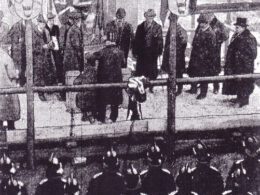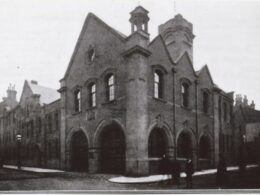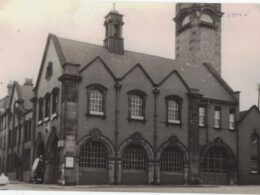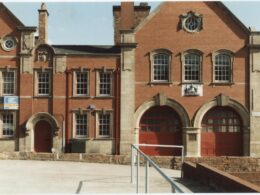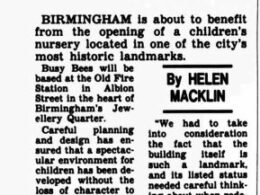The new fire station was built at a cost of £9870, opening in 1911. The architect was T G Price and the building he designed was a large L-plan block of buildings on a corner site. Historic England describe the building as combining ‘Wrenaissance elements with Birmingham Arts and Crafts motifs’. Wrenaissance is a term used for Baroque revival architecture popular in the early 20th century, inspired by the architect Christopher Wren and the renaissance style.
In the 1911 census, 12 fire brigade officers are listed as living on site, some single and some with their families. Edward Corkram lived here with his wife Ada, two sons called Arthur and Ernest and a daughter Ada who worked as a jewellers clerk. Another fire officer who lived on site, Alfred Partridge, also had a daughter called May who worked in the jewellery trade as a gold cutter.
The fire brigade living on site proved to be useful during an incident on 11 December 1933. An off-duty fireman saw smoke coming from the factory next door to the station – the premises of W H Wilmot, a maker of gentlemen’s gold dress chains. Thirty officers and seven machines were involved for an hour before the fire was eventually extinguished. The Western Morning News reported that the offices and workshops on two floors were damaged and the roof was badly burnt. There was so much damage to the workshops or ‘shopping’ to the rear of the building, that they had to be rebuilt after the fire.
The station continued operating until 1968 and in 1992, Busy Bees Nursery opened in the Old Fire Station building. It has been a nursery ever since and thousands of children have enjoyed learning in this unique historic building in the heart of the Jewellery Quarter.
Building Timeline
1909
The foundation stone was laid for
the new fire station
1911
Albion Street Fire Station opens
1968
Fire station closes
1992
Building opens as a nursery


